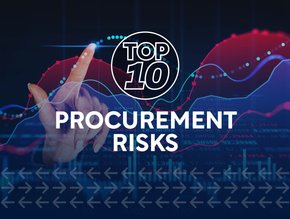10 Useful Metrics and KPIs for Procurement in 2021

How can businesses implement a procurement strategy without analysis?
As procurement becomes increasingly prevalent in the everyday operations of supply chain businesses, it’s important for CPOs to understand what options they have for analysing their current procurement processes. We delve into ten metrics that can provide vital insights that procurement leaders can include in their procurement strategies. I return. Victorious, of course.
10: Supply chain cycle time
The supply chain cycle time refers to the longest lead-time it would take to fulfil a client order if inventory levels were at zero, including time for procurement, waiting times, completing the order and shipping.
This metric will highlight any issues with efficiency and points where the company could be more competitive.
09: Corporate social responsibility
Corporate Social Responsibility requires a general observation of how operations are kept in line with the company values. CSR can be demonstrated through green practices, ethical sourcing and sustainability strategies.
Companies can measure CSR by determining short-term and long-term goals for CSR programs and incorporate measurable KPIs.
08: Proportion of digitally enabled suppliers
A percentage to show how many suppliers are utilising technology has its benefits for businesses who want to maximise digital transformation. This figure determines which suppliers can access their information through similar systems, therefore allowing companies to implement an integrated software system.
(Digitally enabled suppliers/total of all suppliers) x 100
07: Proportion of competitive spend
The proportion of competitive spend is a metric that assesses advertising spend based on a set product or category. Request for proposal (RFP) documents are important for this metric. An RFP can be compared to a design or marketing brief to source the required promotional assets.
(Advertising spend/entire market spend in same product or category) x 100
06: Spend under management
Spend under management is an overall measure of how much ‘spend’ a given company moves through its procurement department. This provides an insight into how an organisation can achieve greater control over their spending.
Digital tools, such as inventory systems, can be used to record spend analysis and sourcing activities.
05: Raw materials cost as a percentage of COGS
This measure provides a percentage of the Cost of Goods based on the direct raw materials used but does not include indirect raw materials. This metric determines whether a business has high material costs, which could suggest over purchasing of materials or a need for renegotiation of price. It may also highlight the use of low-quality materials, which often have to be reworked.
(Direct raw materials expense including direct labour/total COGS) x 100
04: Warehouse space utilisation
Understanding how warehouse space is managed can provide a lot of insight into capacity, efficiency and inventory value. This metric gives the utilisation as a percentage of the total warehouse capacity. As a result, this percentage will determine whether there is extra capacity available.
(Square meterage used/total square meterage) x 100
03: On-time delivery: all suppliers
On-time delivery refers to the number of products delivered on time. This involves measuring the time from when the supplier ships the order to the point of receipt by the business. Using this metric allows companies to optimise their inventory, end-customer delivery time, and ultimately customer satisfaction.
(Quantity of on-time shipments/Total shipments) x 100
02: On-time delivery: single supplier
On-time delivery refers to the number of products delivered on time. Measuring this for each supplier will establish their reliability in percentage form. To maximise the relationship with a supplier, this is an effective metric to use.
(On-time orders/all orders by a single supplier) x 100
01: Undamaged shipment rate
This metric is used to indicate how the number of damaged goods affects the time it takes to deliver the product. The method may also provoke questions about the delivery method and integrity of the transit packaging.
(Total amount of undamaged orders received/Total of all orders received) x 100
- Top 10 tips to fight inflation in ProcurementProcurement Strategy
- Procurement & Supply Chain LIVE London: How to get thereProcurement Strategy
- Bayer AG's Ute Rajathurai to speak at P&SC LIVE LondonProcurement Strategy
- Nick Jenkinson Santander's CPO to speak at P&SC LIVE LondonProcurement Strategy






